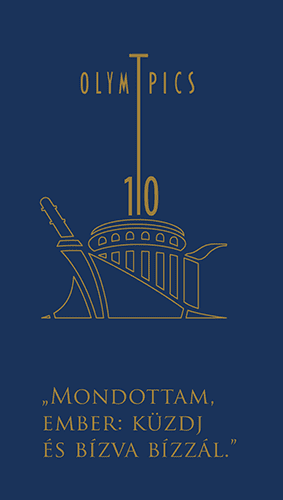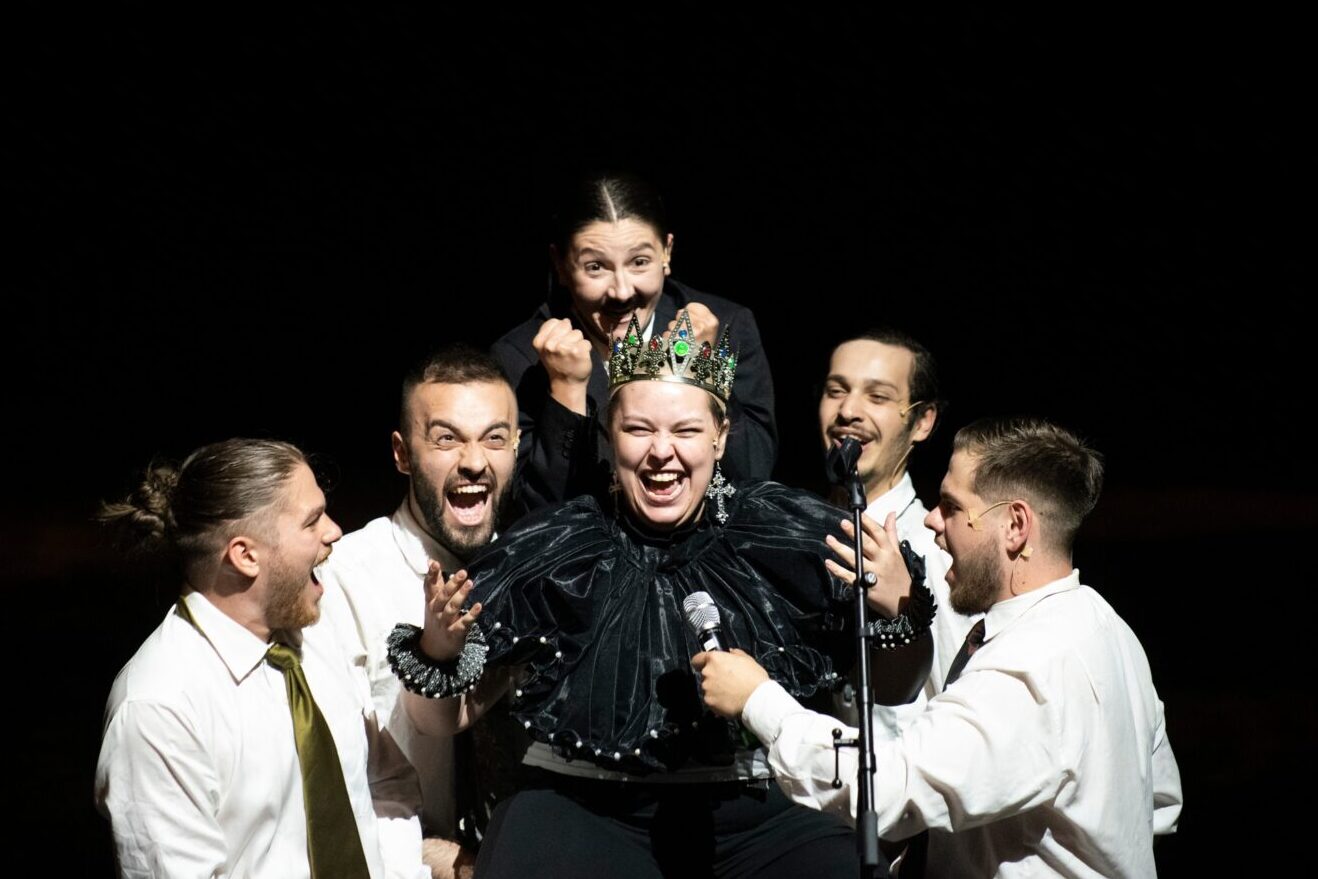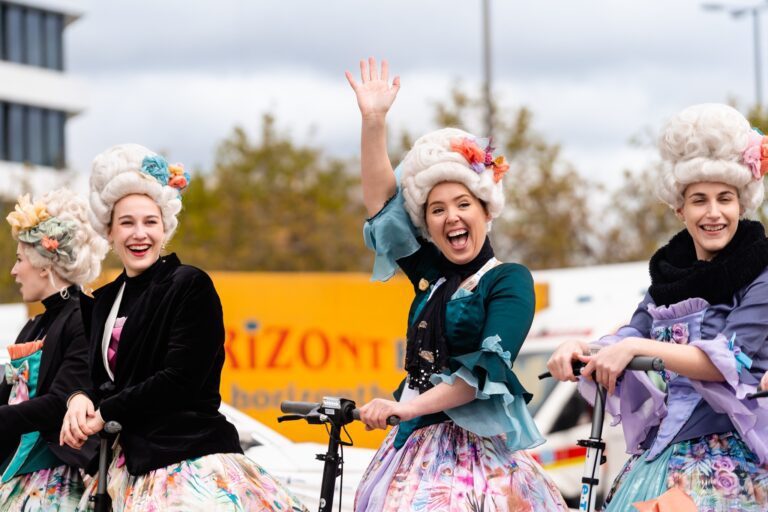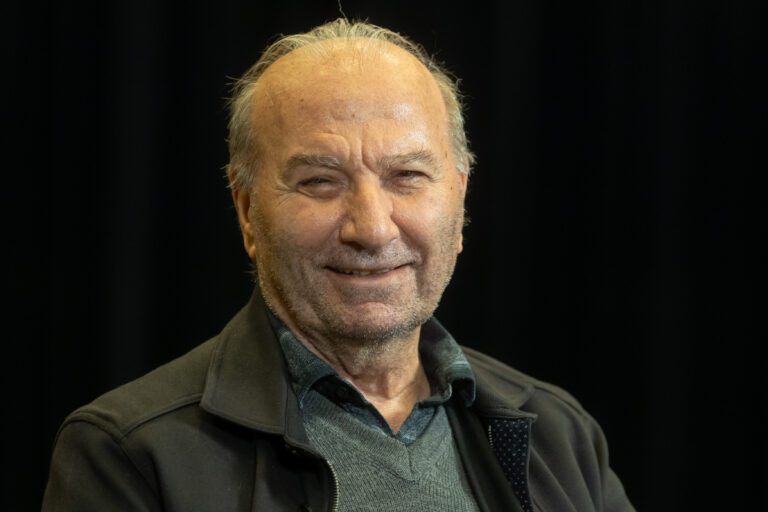The Madách Project 2023, a transcontinental project organised by the University of Theatre and Film Arts, Budapest in the framework of the 10th Theatre Olympics, is a tribute to our playwright, born two hundred years ago. Anca Bradu, Director and Professor of the Department of Theatre Directing at the UNATC I. L. Caragiale University of Theatre and Film Arts, wrote about the international programme of events involving young theatre professionals and actors.
At the end of a demanding academic year for Romanian theatre, and not only Romanian theatre, full of challenges to redefine pedagogical and artistic paradigms, the UNATC Department of Theatre Design, in collaboration with the Department of Acting, had the honour to participate in an impressive international research and creative programme. Held in Budapest from 8 to 24 June, the event brought together more than 11 universities and theatre schools from 4 continents, who were invited to jointly formulate a theoretical and practical study perspective through the exploration of Imre Madách’s dramatic epos, The Tragedy of Man, in an event celebrating the 200th anniversary of the birth of the great Hungarian writer. Thus, from March of the last academic year, the drama students of the international theatre schools that accepted the invitation started working on the individual plays, each set in a specific historical place and time. In many cases, the work was performed by students of the nationality of the country where the scene was set, in their own language. This concept of interculturality and multilingualism is the structural basis of Madách’s poem, as his large-scale work is based on the Faustian model in 15 scenes that follow the journey of the archetypal couple Adam and Eve through time and space, led by Lucifer, the fallen angel. The sequence of events gives them an ontological perspective of humanity in all its magnificence and decadence.
For our students, the encounter with this kind of challenge was completely new and innovative, which is why I was delighted to be part of such an experiment as a coordinator. Three stage director students and 11 actors – first-year students and graduates of our Master’s programme – worked together to prepare the three parts we were involved in staging: the two Prague scenes and the Eskimo World scene. The first two are set in a period historical setting, while the latter is a fictional, dystopian, agonistic world. I was pleasantly surprised by the analytical and creative approach of our students, which has been a feature of their work from the very beginning. Their ideas and concepts in analysing and processing the material brought a very fresh and expressive approach to a poetic text written nearly two centuries ago.
With these scenes prepared in Bucharest, we participated in the event series in Budapest in June. For the first time, all the international productions were presented separately over three days in a symposium, which gave me the opportunity to see in context the different approaches and practices of the works, which have shaped the methods of the participating schools. The adaptations were in themselves spectacles of cross-cultural, multilingual communication and exploration of identity, and foreshadowed the enormity of the project, and what a powerful performance the production could become in the weeks following the symposium. The final part of the programme in Budapest, the term leading up to the premiere and television broadcast of the performance imagined and directed by Attila Vidnyánszky on 23 June, was another powerful experience for the students involved. They collaborated effectively in reimagining each of the scenes, whether as one of the supporting characters and members of the chorus or in the various personas of the main characters, Adam, Eve, or Lucifer, who reappeared again and again in different scenes. In a massive scenographic space designed and arranged exclusively for this performance, the scenes seen before were reborn, resized to fit the space, enlarged and enhanced with set elements, costumes, deliberately oversized props, pyrotechnics, live and recorded sound effects, through the interpretation of the great Hungarian director Attila Vidnyánszky. I should mention that the three Romanian student directors, who, along with their two other Hungarian colleagues, came alone as student directors from the participating universities, were heavily involved in the creative process of the performance. Their merit was already evident in the presentation of the performances created in Romania, and they became kind of chief assistant directors of the final production, while the Romanian student actors were assigned to every scene of the wonderful production. So it can be said that Romanian participation was an important pillar throughout the whole process. Therefore, we asked our student directors to share some thoughts about this intense and important multicultural artistic experience. Their reflections are more eloquent than anything else I can add here, so I will conclude my report by repeating the words of my teachers who have guided me throughout my career: great ideas make great performances. Obviously, I am thinking here of content, not just form.
Prof. Anca Bradu
Director of the Department of Theatre Direction, UNATC






